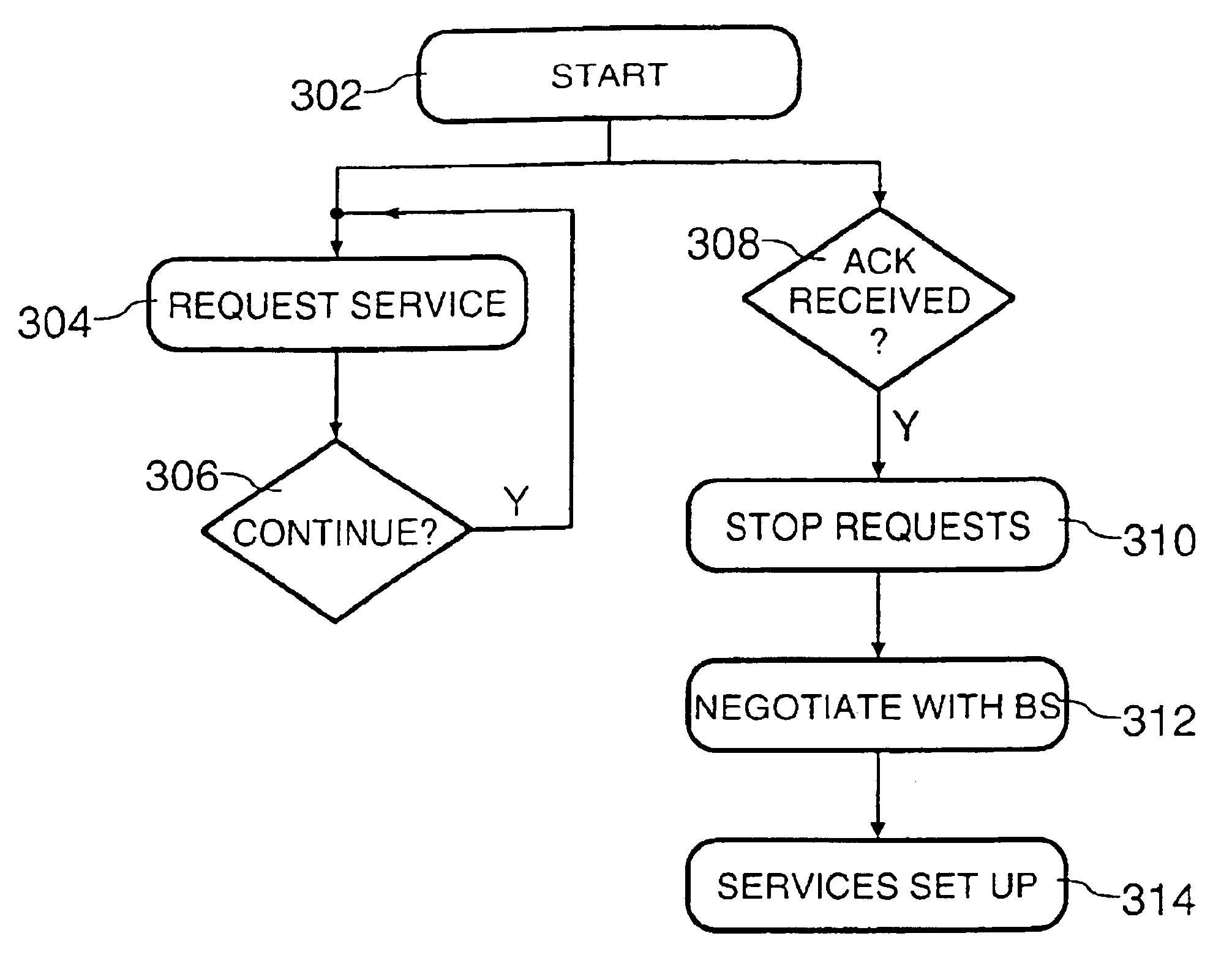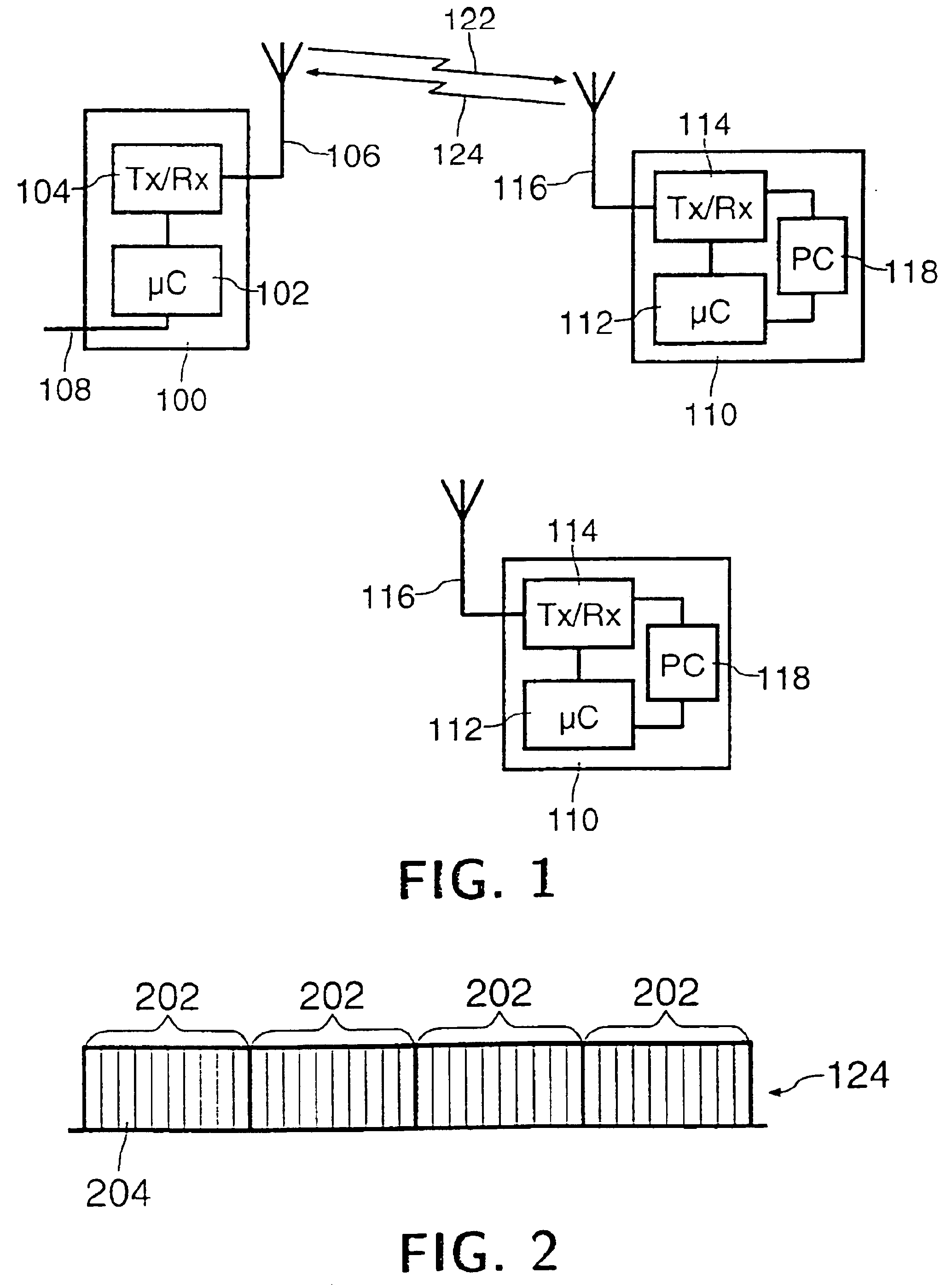Radio communication system with request re-transmission until acknowledged
- Summary
- Abstract
- Description
- Claims
- Application Information
AI Technical Summary
Benefits of technology
Problems solved by technology
Method used
Image
Examples
Embodiment Construction
Referring to FIG. 1, a radio communication system comprises a fill primary station (BS) 100 and a plurality of secondary stations (MS) 110. The BS 100 comprises a microcontroller (μC) 102, transceiver means 104 connected to radio transmission means 106, and connection means 108 for connection to the PSTN or other suitable network. Each MS 110 comprises a microcontroller (μC) 112, transceiver means 114 connected to radio transmission means 116, and power control means 118 for altering the transmitted power level. Communication from BS 100 to MS 110 takes place on a downlink channel 122, while communication from MS 110 to BS 100 takes place on an uplink channel 124.
The present invention is concerned with an uplink channel 124 dedicated to the transmission of requests for services by a MS 110 to a BS 100. One arrangement of such a channel for UMTS is illustrated in FIG. 2. The uplink channel 124 is divided into a succession of frames 202, each of length 10 ms, and each MS 110 registere...
PUM
 Login to View More
Login to View More Abstract
Description
Claims
Application Information
 Login to View More
Login to View More - R&D
- Intellectual Property
- Life Sciences
- Materials
- Tech Scout
- Unparalleled Data Quality
- Higher Quality Content
- 60% Fewer Hallucinations
Browse by: Latest US Patents, China's latest patents, Technical Efficacy Thesaurus, Application Domain, Technology Topic, Popular Technical Reports.
© 2025 PatSnap. All rights reserved.Legal|Privacy policy|Modern Slavery Act Transparency Statement|Sitemap|About US| Contact US: help@patsnap.com



